| « 23 / 30 Basic Research | 21 / 30 The legacy of gazes » |
22 / 30 Writing takes time, writing takes space
What does your body do when you write? For this text my fingers touched the keyboard of my computer more than 10000 times. The final version is 6290 characters long (including spaces). It took me about five hours in total to write it. And I wrote it at three different locations: at my desk at the Festung, at the desk in my room and in my bed. Why do I tell you this? The interview with Jennifer Allen about her writing course has been a self-referential experience. We talked about writing as art, the process of unlearning it and overcalculation.
The photos in the text were shot by a programme called LifeSlice. It automatically takes a picture every thirty minutes. They document what happened to my face while writing this text.
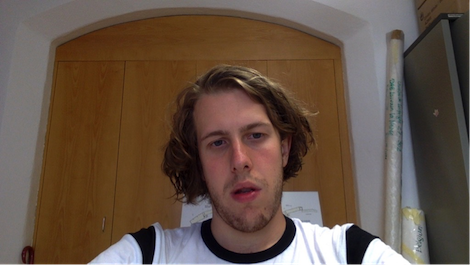
What your course about?
The course is about re-learning writing as an artistic medium. So it is not so much about the content or style or grammar, but more about writing as medium. If you see writing as a medium it is really close to making mosaics. It is about one little piece, one letter after another and how it grows like that. Once people re-learn writing as physical, bodily, temporal and spatial medium of expression than they have a lot easier time doing it.
Why is this re-learning important?
We tend to abstract writing. We treat it as such an abstract way that no one thinks about the body anymore. I just showed a text that I wrote. It is three pages long, single spaced. It contains 13.000 characters including spaces. And that really brings it home. I touched the keyboard 13.000 times to write three pages. This is not a long text. But then if you think: try to walk 13.000 steps and see how far you get. Writing texts is really boring. It is tedious work. You may as well be counting lentil seeds. Seriously, 13.000 characters in a short text. Just imagine how many bags of lentils that is. You don’t even think about that. Everybody is like, well it is not serious enough, it has to be more poetic. But for your fingers it is 13.000 times hitting the keyboard.
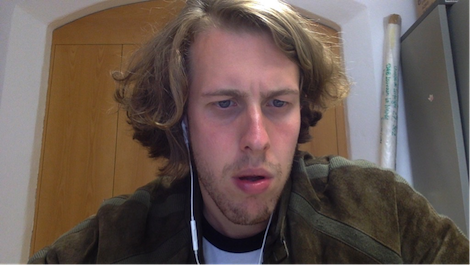
It’s interesting that you say you want to teach the artistic side of it. In most contexts writing is very functional.
You have always two sides to writing: a connotative and a denotative side, something that is direct and something that is indirect. Art is obviously supposed to be indirect. If you say, this is a painting of my mother, which is about sadness, then it is not interesting to look at. As information it is completely exhausted. Art has many different meanings and you can always re-interpret it. Whereas if you take the exact opposite this would be a traffic sign: no parking at any time. It is very clear. There is no question about how to interpret it. That is the problem within language itself: you have these two poles.
Who are the people in course?
So we have two tendencies in the course. We have artists, who are coming from the indirect side and who had artist training and now want to become writers. Their problem is: how do I get text more direct? If you want to write a curatorial statement, you are going to reach a huge public. It could be professionals, the press, so it is going to have to really direct and simple. The other students come from art history. They are coming a very direct way of writing. They want to go more to the artistic side of writing. How do you bring that direct language to something that is somewhat indirect without killing it?
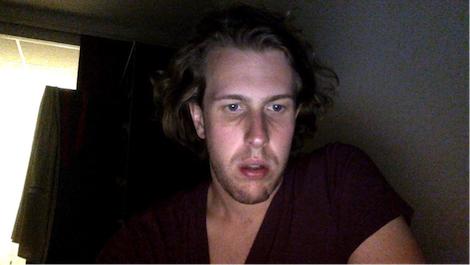
How can I imagine this process of unlearning and relearning writing in your class?
I think you learn it through your body. If you try to write a sentence with lentil seeds, you will be aware of what writing entails. Another person had to write with toothpaste. That was a really interesting exercise. One student who wrote with plastic letters used all the letters to write words with them. The one with toothpaste wrote one sentence and then gave up. I find that interesting how people use the materials. You get a physical sense of it. And then we have in the afternoons these collective workshops. They are called ‘kill your ego’, ‘time’ and ‘space’. So you re-learn it spatially, you re-learn it temporally and then what we do in the afternoons are studio visits. So each person gets to present a selection of their texts.
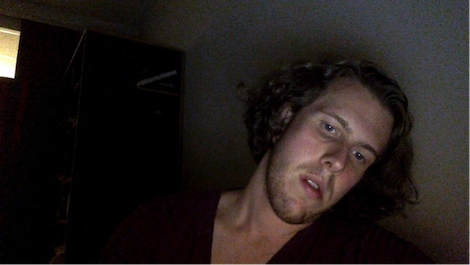
What do we tend to forget about the temporality of writing?
You don’t know how much time is put into one text. James Joyce would work a day on one sentence or even a week. Then you have this really famous Belgian crime writer, George Simenon: he would write an entire book in three days. He would come out of them and would have migranes and throw up. He wrote more than five-hundred books in his life. The time of writing has no relationship to the time of what you read or how long it takes you to read or the amount of space it takes up. So that means you have to impose your own temporality on writing.
Does that also count for space?
Text is about space. Above all it is about space. In a drawing you could sketch your face really light. You can’t do that in a text. You have to type every single letter every space, period and comma. There is no skipping over. I compare it to a dinner party. The first time you made a dinner party you probably didn’t make the right amount of food. You under- or overcalculated. That happens with texts, too. People don’t have a feeling for space. Most people have way too many ideas that they try to say when they don’t have enough space. I literally say to my students: walk the text. Walk the words with your body. Can I say all this in 200 words? Most people can’t.
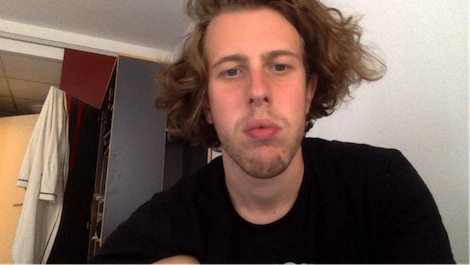
I assume that at certain moments in your class people have to deal with a writer’s block or other resistances towards writing. How do you deal with that?
I haven’t seen that problem and I was quite surprised about that. The quality of the texts has been really good. I think when you are writing in a group it is like learning to swim. When you are alone, you are like: ‘I don’t know if I want to go in there, I will better lie down at the beach again.’ When you are in a group you are: ok when everybody does it, I can do it, too. I have never had a situation where somebody was completely blocked. We think of writing as solitary and special and sacred, but in fact it does not have to be. I think already the group experience helps a lot to kill the ego. Everyone is in the same boat, we all have to do the same things.

